|
There
were, of course, originally only two members of the Silent
3 of St Botolph's. They were Wendy Trevellyan and Paul Reed.
The third member was Anthony Rowley who they met in the Rowan
Tree cafe in Bristol in 1984. He was talking bollocks about
music with an old schoolfriend.
Wendy sang, Paul played guitar and Anthony... well, it wasn't
exactly clear what Anthony did. He wrote some lyrics, designed
their flyers and record sleeves and spent a long time arguing
with their first record label, the glamorously named Revolver
Distribution Label.
They were united in the belief that the two greatest albums
ever made were Hatful of Hollow by the Smiths and Rattlesnakes
by Lloyd Cole & The Commotions.
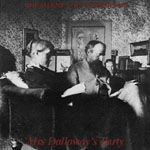 Their
debut album Mrs Dalloway's Party sounded if anything
like The Cocteau Twins, and with song titles like 'Copper
Coloured Cacophony' they were dismissed as mere copyists by
most of the press. They did, however, gather a cult following
in Bristol, where Rowley's claims of knowing irony and piss-taking
were more plausible. Their
debut album Mrs Dalloway's Party sounded if anything
like The Cocteau Twins, and with song titles like 'Copper
Coloured Cacophony' they were dismissed as mere copyists by
most of the press. They did, however, gather a cult following
in Bristol, where Rowley's claims of knowing irony and piss-taking
were more plausible.
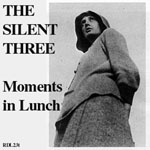 As a nod in this direction, he called their next release,
a 4-track 12" single, 'Moments in Lunch', a swipe at
the currently hip Art of Noise. The sleeve notes were a parody
of Paul Morley's style, but again the band was doomed to be
taken at face value or ignored by the press.
As a nod in this direction, he called their next release,
a 4-track 12" single, 'Moments in Lunch', a swipe at
the currently hip Art of Noise. The sleeve notes were a parody
of Paul Morley's style, but again the band was doomed to be
taken at face value or ignored by the press.
The three had planned to go their seperate ways when they
went to university - Wendy had long planned to study English
at Manchester, and Paul Geography in Kent - but then Anthony
threw a spanner in the works. He had always said he wouldn't
leave Bristol, but he suddenly announced he'd secured a place
at UMIST to study Computer Science. Enraged, Paul announced
that he too would be going to Manchester, and the Silent 3
continued despite itself.
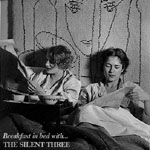 Manchester
proved a creative atmosphere, and they polished a more original
guitar-based sound, taking their place among the other 'C-86'
bands of the time. More gigs and a new album Breakfast
in Bed with The Silent 3 followed, released by Factory
Records. It included a collaboration with Vini Reilly of the
Durutti Column and gained favourable reviews. However, nobody
had bothered to get permission for the cover image of Lee
Miller and a friend lying in bed in front of a Cocteau wall
hanging (another nod at the Cocteau Twins...) and the album
had to be pulled at the last moment at great expense. Much
time was also wasted in wrangling over Factory's refusal to
put it out on the relatively new CD format, Rowley eventually
having the album digitally remastered at his own expense and
sending it to label boss Tony Wilson's home with a case of
scotch. It was finally re-released in the infamous morgue
sleeve below and with the truncated title, but so much time
had passed since its press coverage it sank without trace.
One of Factory's rarer releases, copies of it have been known
to change hands for between £20-30. Manchester
proved a creative atmosphere, and they polished a more original
guitar-based sound, taking their place among the other 'C-86'
bands of the time. More gigs and a new album Breakfast
in Bed with The Silent 3 followed, released by Factory
Records. It included a collaboration with Vini Reilly of the
Durutti Column and gained favourable reviews. However, nobody
had bothered to get permission for the cover image of Lee
Miller and a friend lying in bed in front of a Cocteau wall
hanging (another nod at the Cocteau Twins...) and the album
had to be pulled at the last moment at great expense. Much
time was also wasted in wrangling over Factory's refusal to
put it out on the relatively new CD format, Rowley eventually
having the album digitally remastered at his own expense and
sending it to label boss Tony Wilson's home with a case of
scotch. It was finally re-released in the infamous morgue
sleeve below and with the truncated title, but so much time
had passed since its press coverage it sank without trace.
One of Factory's rarer releases, copies of it have been known
to change hands for between £20-30.
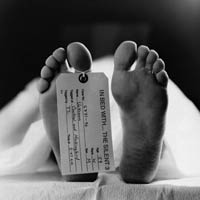
Touring and Anthony's increasingly erratic behaviour were
taking its toll on Wendy. It was about this time that she
also discovered she was pregnant. Any outside observer would
have assumed that the obvious thing would be to kick Anthony
out of the band and get a proper manager - but such was the
stress she was under she felt she could no longer perform
in public at all. Wendy was taken back in by her parents who
bought and converted a windmill for her to live in. Here she
lived for many years, bringing up her son Jake. In 1998 Wendy
signed a deal with Cooking Vinyl to release her first solo
album, entitled I Am Not Jonathan Creek.
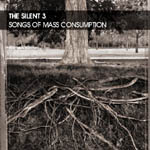 Meanwhile,
Anthony and Paul spent a year bumming around the States, taking
odd jobs and scraping together enough cash to occasionally
go into a recording studio where ever they happened to be,
and record a track. They returned to the UK with a folk-tinged
collection of mournful ballads that they tried - and failed
- to flog to 4AD. Ivo Watts-Russell (who had just signed the
Red House Painters) said he wasn't interested as he had just
signed the Red House Painters. Frustrated at being unfavourably
compared to another 4AD band - this time one they had never
even heard of - they realeased Songs of Mass Consumption
on their own 3AA label. The name of the label, they claimed,
had nothing to do with 4AD but was in fact the last 3 digits
of their old postcode in Bristol. The album failed to chart. Meanwhile,
Anthony and Paul spent a year bumming around the States, taking
odd jobs and scraping together enough cash to occasionally
go into a recording studio where ever they happened to be,
and record a track. They returned to the UK with a folk-tinged
collection of mournful ballads that they tried - and failed
- to flog to 4AD. Ivo Watts-Russell (who had just signed the
Red House Painters) said he wasn't interested as he had just
signed the Red House Painters. Frustrated at being unfavourably
compared to another 4AD band - this time one they had never
even heard of - they realeased Songs of Mass Consumption
on their own 3AA label. The name of the label, they claimed,
had nothing to do with 4AD but was in fact the last 3 digits
of their old postcode in Bristol. The album failed to chart.
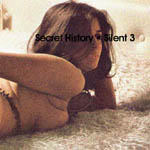 Moving
back to Manchester for a while, the pair became increasingly
impressed with the work of Barry Adamson, and started amassing
as much new studio technology to help them attain a funkier,
sleazier sound. The result was an album, Secret History,
comprised largely of instrumentals, that provided a steady
source of cash when one of its tracks was used in a TV commercial
in the States. Being released days before the collapse of
Factory it failed to chart but had some critical success in
the UK and became a minor cult item, chiefly through its scarcity
and being named by the NME as 'one of the 3 albums
that brought down Factory'. Moving
back to Manchester for a while, the pair became increasingly
impressed with the work of Barry Adamson, and started amassing
as much new studio technology to help them attain a funkier,
sleazier sound. The result was an album, Secret History,
comprised largely of instrumentals, that provided a steady
source of cash when one of its tracks was used in a TV commercial
in the States. Being released days before the collapse of
Factory it failed to chart but had some critical success in
the UK and became a minor cult item, chiefly through its scarcity
and being named by the NME as 'one of the 3 albums
that brought down Factory'.
 Paul
Reed got increasingly involved in the now booming dance scene
in Manchester, and Anthony got increasingly pissed off with
a loved-up world he didn't like or understand. A split was
on the cards, and they finally agreed that Paul would take
the studio gear and Anthony the name. Anthony moved to South
London where he wrote fiction and became increasingly interested
in the possibilities of the new digital editing systems available
on low-end PCs. The final release under the name The Silent
3 came in 1997 - Penge Pops Out was a curious instrumental/ambient
album that drew on influences from Stereolab to The Orb and
Chris Morris. Paul
Reed got increasingly involved in the now booming dance scene
in Manchester, and Anthony got increasingly pissed off with
a loved-up world he didn't like or understand. A split was
on the cards, and they finally agreed that Paul would take
the studio gear and Anthony the name. Anthony moved to South
London where he wrote fiction and became increasingly interested
in the possibilities of the new digital editing systems available
on low-end PCs. The final release under the name The Silent
3 came in 1997 - Penge Pops Out was a curious instrumental/ambient
album that drew on influences from Stereolab to The Orb and
Chris Morris.
The entire Silent 3 back catalogue is being re-issued next
month on Ekaf Recordings.
|












